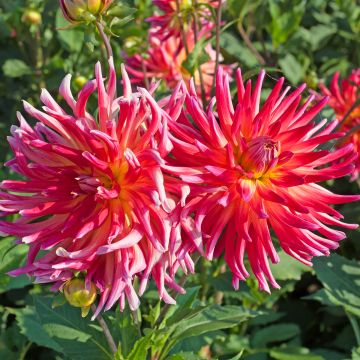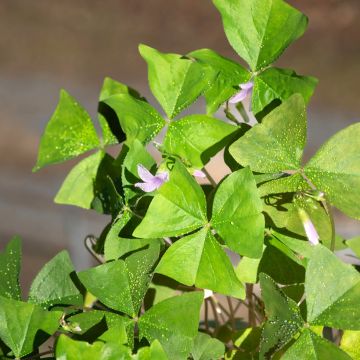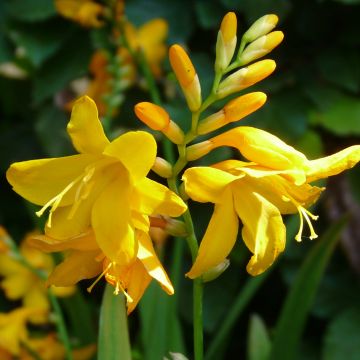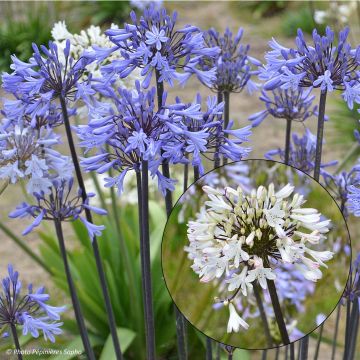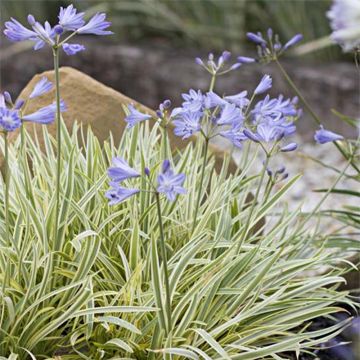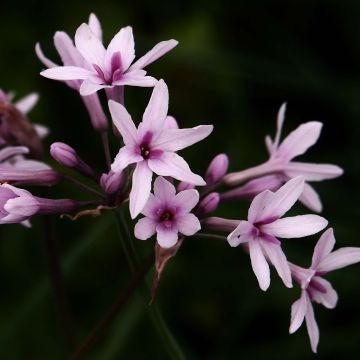

Gloriosa lutea - Glory Lily
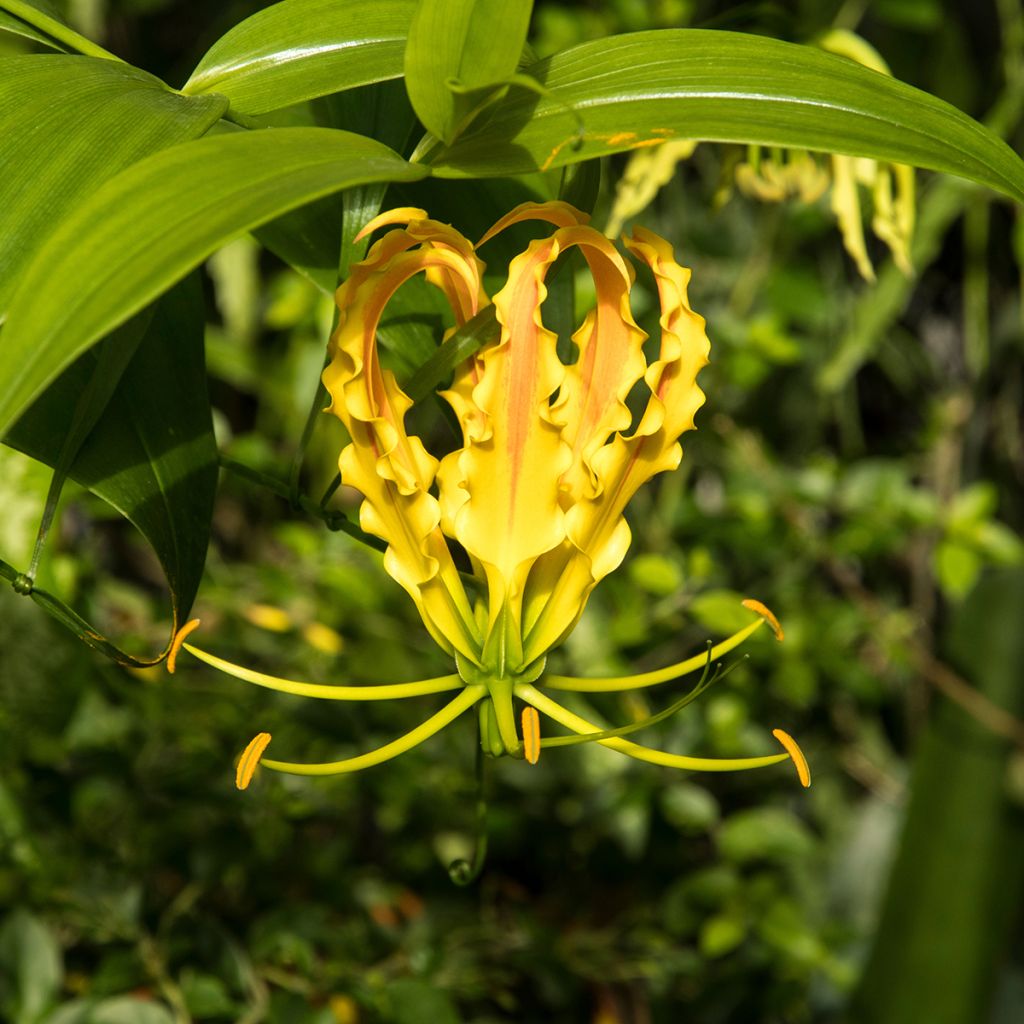

Gloriosa lutea - Glory Lily


Gloriosa lutea - Glory Lily


Gloriosa lutea - Glory Lily
Gloriosa lutea - Glory Lily
Gloriosa lutea Lutea
Glory Lily
This item cannot be shipped to the selected country
Delivery charge from €5.90
More information
Schedule delivery date,
and select date in basket
This plant carries a 6 months recovery warranty
More information
We guarantee the quality of our plants for a full growing cycle, and will replace at our expense any plant that fails to recover under normal climatic and planting conditions.
From €5.90 for pickup delivery and €6.90 for home delivery
Express home delivery from €8.90.
Does this plant fit my garden?
Set up your Plantfit profile →
Description
Originally from East Africa and Southeast Asia, Gloriosa lutea, also known as glory lily, is an astonishing tuberous climbing plant. It lives up to its other name, Malabar Glory, evoking the tropical splendours of this ancient province. It produces strange arachnid-like large bright yellow flowers with undulating petals. This exotic flowering stands out from its lush foliage, composed of long, thick, dark green and shiny leaves, further emphasising its uniqueness. It requires a sunny exposure, and fertile and well-drained soil. It is essential to store it dry in winter.
Gloriosa lutea belongs to the Colchicaceae family. The flower is the emblem of Mozambique, which highlights its African origins, although it is also found in its natural state growing in the tropical forests of South India. This herbaceous vine develops from a fleshy and elongated tuber, light in colour under a brown tunic. At one end, a round and pink bud develops, which will give rise to a flexible voluble stem. It can reach a height of 1.5m (5ft) if conditions are right. It completes its growth in one season. The flowers appear in early summer on 2-year-old bulbs and older, in the form of large blooms (8 to 10cm (3 to 4in) long) resembling lilies with petals completely turned towards the sky. They are slender with undulated edges. The stamens and the base of the petals are bright green, and the colour of the corolla and anthers is imperial yellow. The flowers are solitary, borne on long peduncles arising from the axils of the leaves. The foliage consists of large lanceolate dark green shiny leaves, with a tapered end that transforms into tendrils allowing the plant to cling.
Gloriosa lutea can be easily grown in pots, in a cold greenhouse or in a conservatory. It does not appreciate the heated interiors of homes. It can also be grown in flower beds, in a sunny exposure, in moist but well-drained soil, provided the tubers are kept dry during winter. In this use, it can be associated with climbing plants, for example. The flowers have a good longevity and can be used to create beautiful bouquets.
Report an error about the product description
Gloriosa lutea - Glory Lily in pictures


Plant habit
Flowering
Foliage
Safety measures
Botanical data
Gloriosa
lutea
Lutea
Liliaceae
Glory Lily
East Africa
ingestion
Cette plante est toxique si elle est ingérée volontairement ou involontairement.
Ne la plantez pas là où de jeunes enfants peuvent évoluer, et lavez-vous les mains après l'avoir manipulée.
Pensez à conserver l'étiquette de la plante, à la photographier ou à noter son nom, afin de faciliter le travail des professionnels de santé.
Davantage d'informations sur https://plantes-risque.info
Other Summer bulbs A to Z
Planting and care
Gloriosa lutea is easy to grow in a pot: from late April to May, plant one bulb per 18cm (7in) diameter pot, place it horizontally, 5cm (2in) deep, in a mixture of potting soil and ordinary soil. Only take the plant outside when spring frosts are no longer a concern. Choose a warm location, sheltered from strong winds, but not necessarily in direct sunlight all day. Water regularly and apply fertiliser every 2 or 3 weeks. Provide support for the plant to cling to. You can put 2 tubers upside down in one pot for a more generous display. Removing faded flowers as they appear stimulates the emergence of new flowers. In the warmest regions, you can grow this marvel in the garden, but if it freezes, you will need to carefully remove the bulb at the end of autumn, store it in a dry place, and replant it in the following spring.
Planting period
Intended location
Care
-
, onOrder confirmed
Reply from on Promesse de fleurs
Bulbs to grow in pots
Haven't found what you were looking for?
Hardiness is the lowest winter temperature a plant can endure without suffering serious damage or even dying. However, hardiness is affected by location (a sheltered area, such as a patio), protection (winter cover) and soil type (hardiness is improved by well-drained soil).

Photo Sharing Terms & Conditions
In order to encourage gardeners to interact and share their experiences, Promesse de fleurs offers various media enabling content to be uploaded onto its Site - in particular via the ‘Photo sharing’ module.
The User agrees to refrain from:
- Posting any content that is illegal, prejudicial, insulting, racist, inciteful to hatred, revisionist, contrary to public decency, that infringes on privacy or on the privacy rights of third parties, in particular the publicity rights of persons and goods, intellectual property rights, or the right to privacy.
- Submitting content on behalf of a third party;
- Impersonate the identity of a third party and/or publish any personal information about a third party;
In general, the User undertakes to refrain from any unethical behaviour.
All Content (in particular text, comments, files, images, photos, videos, creative works, etc.), which may be subject to property or intellectual property rights, image or other private rights, shall remain the property of the User, subject to the limited rights granted by the terms of the licence granted by Promesse de fleurs as stated below. Users are at liberty to publish or not to publish such Content on the Site, notably via the ‘Photo Sharing’ facility, and accept that this Content shall be made public and freely accessible, notably on the Internet.
Users further acknowledge, undertake to have ,and guarantee that they hold all necessary rights and permissions to publish such material on the Site, in particular with regard to the legislation in force pertaining to any privacy, property, intellectual property, image, or contractual rights, or rights of any other nature. By publishing such Content on the Site, Users acknowledge accepting full liability as publishers of the Content within the meaning of the law, and grant Promesse de fleurs, free of charge, an inclusive, worldwide licence for the said Content for the entire duration of its publication, including all reproduction, representation, up/downloading, displaying, performing, transmission, and storage rights.
Users also grant permission for their name to be linked to the Content and accept that this link may not always be made available.
By engaging in posting material, Users consent to their Content becoming automatically accessible on the Internet, in particular on other sites and/or blogs and/or web pages of the Promesse de fleurs site, including in particular social pages and the Promesse de fleurs catalogue.
Users may secure the removal of entrusted content free of charge by issuing a simple request via our contact form.
The flowering period indicated on our website applies to countries and regions located in USDA zone 8 (France, the United Kingdom, Ireland, the Netherlands, etc.)
It will vary according to where you live:
- In zones 9 to 10 (Italy, Spain, Greece, etc.), flowering will occur about 2 to 4 weeks earlier.
- In zones 6 to 7 (Germany, Poland, Slovenia, and lower mountainous regions), flowering will be delayed by 2 to 3 weeks.
- In zone 5 (Central Europe, Scandinavia), blooming will be delayed by 3 to 5 weeks.
In temperate climates, pruning of spring-flowering shrubs (forsythia, spireas, etc.) should be done just after flowering.
Pruning of summer-flowering shrubs (Indian Lilac, Perovskia, etc.) can be done in winter or spring.
In cold regions as well as with frost-sensitive plants, avoid pruning too early when severe frosts may still occur.
The planting period indicated on our website applies to countries and regions located in USDA zone 8 (France, United Kingdom, Ireland, Netherlands).
It will vary according to where you live:
- In Mediterranean zones (Marseille, Madrid, Milan, etc.), autumn and winter are the best planting periods.
- In continental zones (Strasbourg, Munich, Vienna, etc.), delay planting by 2 to 3 weeks in spring and bring it forward by 2 to 4 weeks in autumn.
- In mountainous regions (the Alps, Pyrenees, Carpathians, etc.), it is best to plant in late spring (May-June) or late summer (August-September).
The harvesting period indicated on our website applies to countries and regions in USDA zone 8 (France, England, Ireland, the Netherlands).
In colder areas (Scandinavia, Poland, Austria...) fruit and vegetable harvests are likely to be delayed by 3-4 weeks.
In warmer areas (Italy, Spain, Greece, etc.), harvesting will probably take place earlier, depending on weather conditions.
The sowing periods indicated on our website apply to countries and regions within USDA Zone 8 (France, UK, Ireland, Netherlands).
In colder areas (Scandinavia, Poland, Austria...), delay any outdoor sowing by 3-4 weeks, or sow under glass.
In warmer climes (Italy, Spain, Greece, etc.), bring outdoor sowing forward by a few weeks.



































